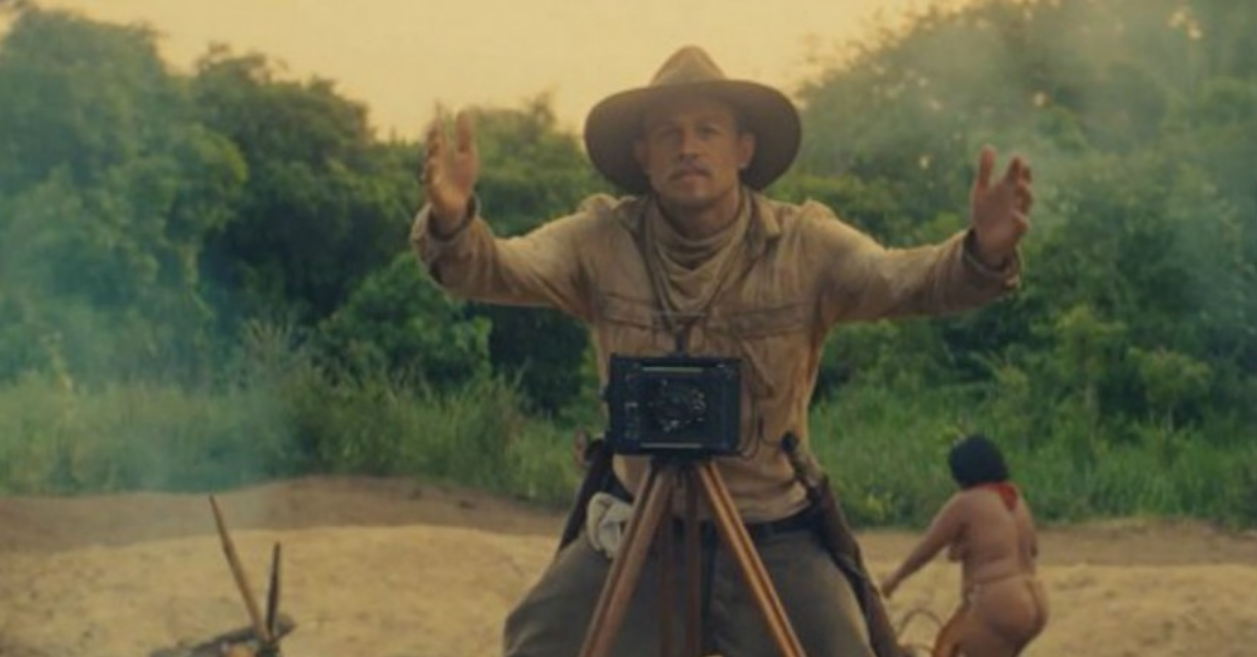When The Lost City of Z was screened earlier this week at the San Francisco International Film Festival, director James Gray took to the stage to briefly introduce it.
After some kind words about our fair city and an enthusiastic celebration of the communal theater experience he holds so dear, Gray closed it out by saying:
Well, that’s probably enough. We should start the movie — I hear it’s four and a half hours long. Anyway, I hope you enjoy the picture.
140 minutes later — that part was a typically self-deprecating joke, delivered in an indelible NYC accent — Gray’s word-choice seemed perfect. Not a “movie”. Not a “film”. A “picture”.
With that single word, he underscored where he, and The Lost City of Z, are coming from.
The term’s vaguely antiquated sense of mid-century spectacle perfectly encapsulates this gorgeous epic, its contemplative pacing and 35 mm vistas recalling Lawrence of Arabia as much as its jungle setting and single-minded protagonist bring to mind Aguirre: The Wrath of God or Apocalypse Now. The Lost City of Z is about an Englishman determined to find evidence of a civilization that’s been left behind by modernity; it could just as easily be about a director unearthing older, slower traditions to argue for their value in the age of the comic-book blockbuster.

The story itself, adapted from David Grann’s account, concerns the cross-continental adventures of Percy Fawcett, a moderately déclassé member of the British colonial forces who fears he’ll never be able to ascend the ranks and achieve military honor. (“He was rather unfortunate in his choice of ancestors,” one witty courtier, emerging directly from a Jane Austen novel, remarks.) But, with a background in surveying and cartography, he’s tapped by the Royal Geographic Society to undertake a perilous mission to the Amazon and provide information on what he finds to the Empire.
Fawcett, played by a surprisingly sturdy Charlie Hunnam, jumps at the chance, even though it means years away from his wife and newborn child. Along with an unrecognizably bearded Robert Pattinson, a crew of ruffians, and some native slaves, he embarks down the river, trying to find its source. Danger lurks at every turn: hostile indigenous folks who want nothing to do with these interlopers to their land, menacing local rubber barons (a touch that echoes the similarly beautiful, though significantly more caustic, The Embrace of the Serpent), jungle diseases of all kinds. They float, dreamlike, through this space.

Fawcett’s discovery of pottery is a focal point of The Lost City of Z, indicating (to him at least) that the English have profoundly underestimated the “primitives” they so deride. Another set-piece finds a make-shift opera performed under the trees, a nod, perhaps, to Fitzcarraldo.
But Gray’s portrait is far more flattering to the colonialists than Herzog’s: it isn’t madness Fawcett finds but conviction — that there are things we do not know, that others have access to systems of knowledge we dismiss at our peril. His mania is not borne of Herzog’s merciless jungle infecting his brain, or Coppola’s Kurtz “going native” (though there are echoes of both). It’s a reflection of a deep-seated belief in the unknown.
Of course, no one shares this rather open-minded view. Fawcett is nearly laughed out of the convention hall upon his return, cartoonishly aristocratic Brits mocking the idea that anything could exist in the Amazon but cannibals and half-naked savages. The Lost City of Z posits Fawcett as a more or less lonely voice for equality, supported primarily by his independent wife Nina (Sienna Miller), who loathes his years-long absences but believably argues for the importance of the cause.

There’s more; much more. The First World War interrupts the expeditions, and Gray finds time for a harrowing, trench-set battle scene. More children are born, and the eldest comes to deeply resent his absent father. The toll of his career choices on Percy and Nina’s relationship is explored in nuanced detail. A famous explorer urges yet more trips to the jungle, and promptly sandbags the mission with his own self-absorption, callous disregard, and class privilege.
There is a lot going on in The Lost City of Z. Gray was joking when he said his picture played for four hours, but it occasionally starts to feel like it might.
Still, the cinematography — courtesy of the legendary Darius Khondji, who also luminously shot Gray’s 2013 New York-set triumph The Immigrant — is unbelievably striking. The jungle compositions are contrasted with the endless green of the English countryside, a division that echoes Fawcett’s own internal arguments (and Nina’s) between home and Elsewhere. The trench warfare plays like Kubrick’s Paths of Glory by way of Saving Private Ryan, with crane shots competing with muddy claustrophobia. The softly-lit domesticity of a shared bedroom bumps up against the fire-pits of an undiscovered land. It’s a visual feast.
For some, it still might play too long. Others might find something odd and unsettling in the apparent colonialist boosterism, the notion that the “undiscovered” places of the world should serve as a vehicle for one man’s desire. Still others might balk at the offhand cruelty (to animals, very much included).
But if you can get on its wave-length, you’ll find an intensely picaresque throwback to classic cinema, crafted by some of our most talented filmmakers. See it in a theater if you can; James Gray would most certainly appreciate the gesture.

